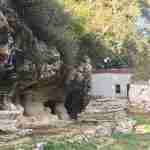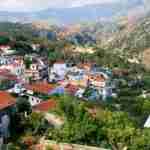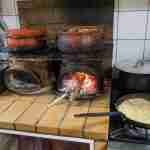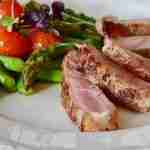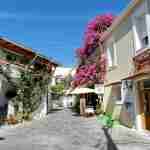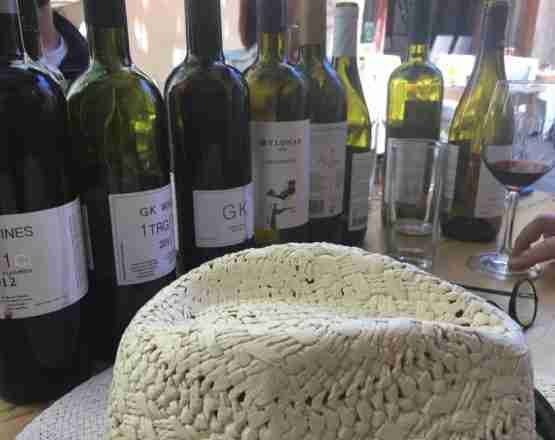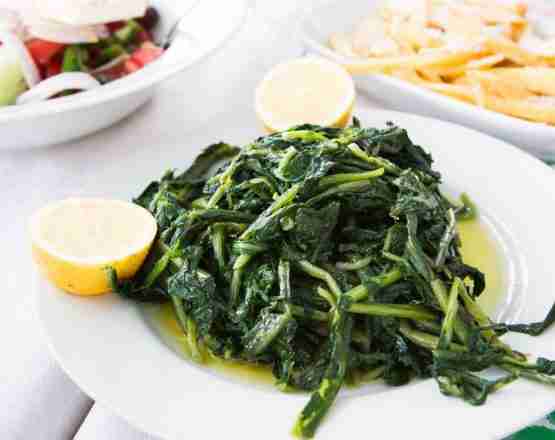Argyroupoli
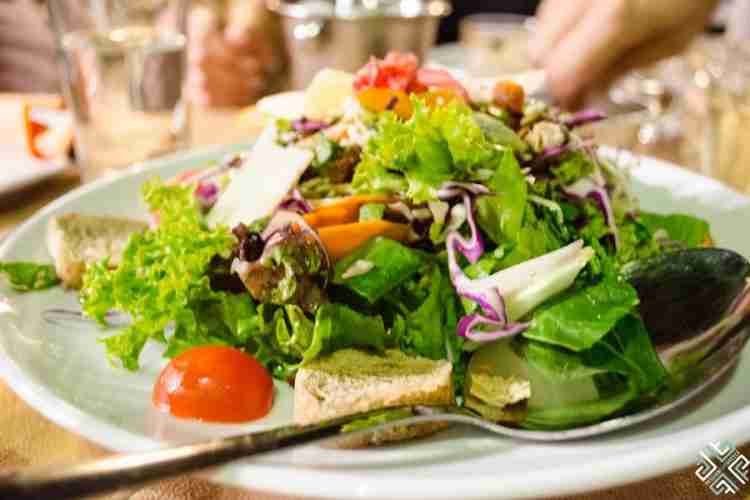
The ‘Mediterranean Diet’ is rightly renown. But what is not often realized is that to a large extent the Mediterranean diet has its roots in the island of Crete. This Cretan approach to eating (and drinking) shows us the way to a better quality of life and well-being.
Recent archaeological excavations and studies of bureaucratic lists written over three thousand years back continue to bring to light new facts about the prehistoric foodstuffs of Minoan Crete, that has much in common with the diet of Crete in the recent past.
Olive oil and olives have been almost from the very first a primary ingredient of the Minoan diet, economy and everyday life. The findings from the “Tzambakas” house (1600 BC) in the area of Hamalevri in Rethymnon brought to light crushed olives. Even today, the oldest and largest olive grove in the Eastern Mediterranean is the one of Rethymnon! Olive-oil was also a much prized vehicle for perfumes .. this luxury product, as indeed the basic oil too, was exported far and wide across the eastern Mediterranean at the end of the Bronze Age.
Animal meat was part of the diet of the Minoans, but they did not eat as much as do modern Cretans. Bones of the consumed animals discovered in excavations were from domesticates like sheep, goats, pigs, cows, as well as hunted animals like red deer, hare and wild pig and goat.
Fish are another matter. Even though an island, the volume of sea-foods eaten was not that great. Not surprisingly, those living near the sea ate more. Fish Hooks and fishing-spears are known, as are stone and lead weights for nets; smaller molluscs were gathered by hand. At Papadiakampos, a cooking pot (and debris nearby) show that a rich stew of shells and crabs was being prepared. Today’s Cretans still prefer meat and dairy products to fish. Cuttlefish, squids and octopuses were and still are an exception to this custom.
The Minoans consumed a number of cereals (most no longer grown today) in the wheat and barley groups. Legumes and pulses were likely daily eaten: the pulses are easily found by archaeologists, the perishable legumes – bulbs and various wild greens – are not. But the latter remain a beloved addition to modern foods: at least 80 kinds of ‘chorta’ are considered edible. Cretans out on a countryside ramble today often collect these herbs and plants as they go, as they do their beloved snails.
The Linear B tablets show us that food flavourings were much appreciated then: some were spices from the east that are in use today, such as coriander, cumin (the word has not changed since those days), and cardamom. Strong-tasting herbs like fennel, celery and mint were available locally. The keraton, which is today’s pistachio, as well as palm dates and figs were likely part of the ancient Cretan cuisine. Seeds and nuts were both locally grown (walnuts) and imported (sesame).
Dairy products were surely known, but the evidence is harder to access: ceramic graters, perhaps for a hard cheese, turn up in excavations. Beekeeping, for honey and wax, was practised. The clay hives turn up frequently. And a son of Minos was, temporarily, drowned in a pithos of honey.
The beverage of wine is known from Minoan writings and inscriptions on pots. It was at times flavoured. A species of distilling may even have produced a distant relative to today’s raki! The dried vine-fruits (as raisins and sultanas) were commonly seen on the table. A sort of beer was brewed too.
Dishes one may taste now – such as pork with artichokes, lamb with figs, goat with honey and thyme are all dishes one could reasonably have tucked into some four millennia ago.
Centuries later, after the arrival of the Romans who changed the food habits throughout the Mediterranean on inheriting the mantle of Alexander the Great, the Cretans kept their tradition of exporting goods – this time to Rome.
This longevity – now stretching back for at least five millennia – is perhaps the best recommendation for this approach to comestibles. The Mediterranean Diet is one with a magnificent pedigree: it has a Past, a Present and, if we ae sensible, a Future.
Food is not just a fuel for our body. Its preparation and presentation is an art, a creative expression of love and the sharing of love. Something identifiable through its tastes, textures, scents, its all-round flavour. The Mediterranean Diet is the outcome of myriads of meals and experiments of all those unknown cooks working daily down the centuries, as history was being made and a cultural heritage fashioned.
So, let us embark on an experience, the adventure of a cooking workshop, set in one of the beautiful villages of Western Crete – Argyroupoli. Your licensed guide (with transportation) will meet you at your hotel. And along the route you will enjoy the lovely landscape of the western, and greener, end of Crete.
Argyroupoli has yielded ancient Greek and splendid Roman finds, as well as Venetian: a village of all seasons. Your guide will give you the opportunity to take in the highlights of the village – its waterfalls, mosaics, and aqueducts, on your way to the lovely veranda which is where your cooking workshop is centred. This is a hands-on experience of Cretan cuisine and diet. After participating in the preparation and cooking, there is time to enjoy the food you have helped make, and sample the wine, sweets and fruit of the season – all the while enjoying the breath-taking and yet heartening view from the veranda.
We will then return you to your hotel: recipes in hand, the tastes still on your tongue .. and nurturing plenty of lovely memories of your outing into a part of the countryside of Crete that is less explored and touched by the oftimes rampant tourist industry.
Book now for your custom-made tour and culinary experience.
Note to the variety of options concerning diet preferences that are available.
The tour can be combined with Rethymno city tour as well.




